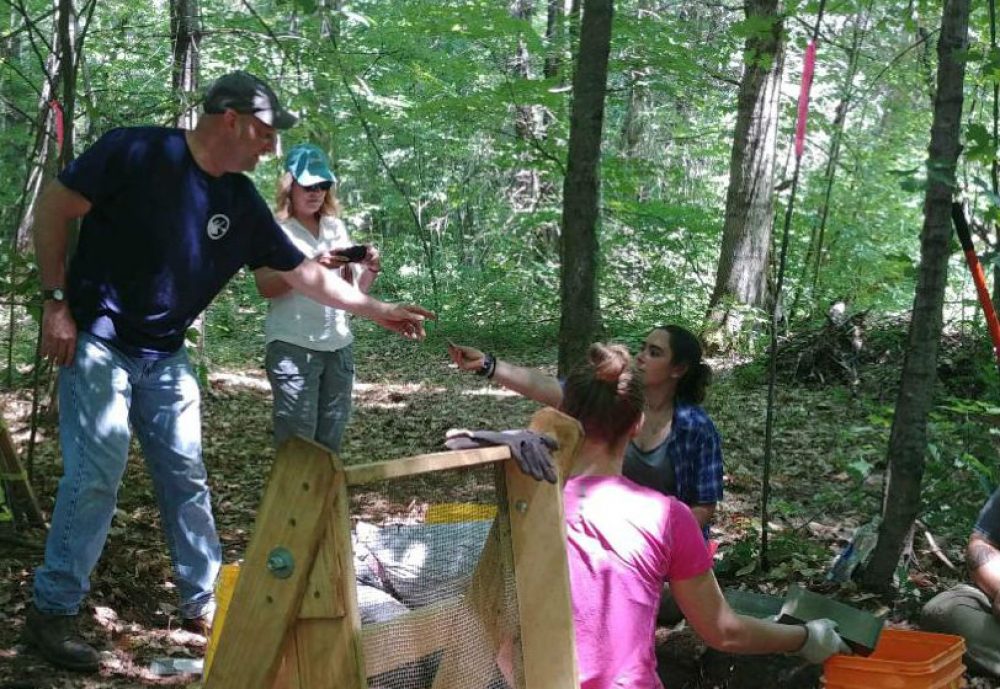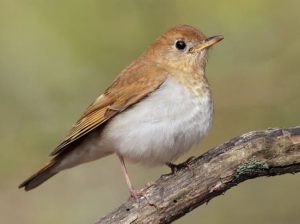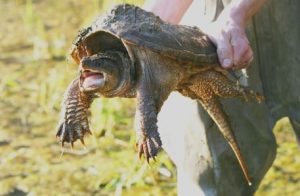The Charismatic Crew of Livermore Falls
Jane Burdick, edited by Mary Ann McGarry
Livermore falls is a beautiful area located in Grafton County. There are two entrances to the site: one in Campton, one in Plymouth. The entrance in Campton was recently repaved and looks much more welcoming for visitors. Past the parking lot there is a beautiful ecosystem with quite a few different habitat types. A trail takes you through a mixed deciduous forest to a small beach along the Pemigewasset River. On the beach there are picnic tables and toilet facilities, and an air compressor to inflate tubes for those who want to float the down the river. Many different species inhabit the site. Birds persist throughout the area. In early morning you can hear their songs throughout the park. There are turtles on the beaches, and salamanders under logs and rocks. Everywhere you look, you’ll see evidence of life. The idea for this piece came from a class trip to the site. One of my professors saw an odd track in the sand, a long indention running between the footprints. We soon saw the creator of the tracks, a common snapping turtle- dragging its tail. I knew then that I wanted to write about animal species in the park.
On an early September morning I ventured back into the park to look for the perfect species to write about. I wanted to make sure every species I highlighted was physically there, and not just a species whose range overlaps with the Livermore Falls Park. A fellow birder friend joined me. We performed point counts, listening for all recognizable birds in the area. The bird point protocol consists of standing in a specific location and counting birds. One counts the number of individual birds (of each species) within a circle of a certain radius. In most cases, especially when gathering data to compare one point count to the next, radius size should be consistent as well as the length of time one counts, Figure 1.
Figure 1. A typical 20 m (m=meter) radius point count where one person counts all the birds seen or heard within a 10 minute period.
My friend works firsthand with salamanders and easily procured one from under some woody debris. Here is some information about the friends you’ll find living in Livermore Falls’ State Forest.
Early mornings, in the hemlock hardwood pine forests, you can hear a distinct song that descends in pitch, and resonates as if whirling around inside a metal pipe (Cornell). The owner of this lovely call is a veery (Passeriformes turdidae). They breed in dense, damp woodlands, often near rivers and streams, as one finds at Livermore Falls These beautiful birds forage mostly on the ground, so when you visit from spring to fall, make sure to look out for them!
©Evan Lipton | Macaulay Library
A more colorful resident of the park is none other than the Northern parula (Passeriformes parulidae). These flashy blue and yellow warblers are closely associated with mosses or lichens that grow on the branches of canopy trees. Here, in the north they use beard moss, a type of lichen. These birds prefer Eastern hemlock, sugar and red maple, and birch trees. Their song is a rising buzzing trill that ends with a final sharp note (Cornell). These birds feed on spiders and insects and can be seen hopping from branch to branch.
© Kevin McGowan | Macaulay Library
Winter may drive away many migratory tropical birds, but no cold temperatures can stop New Hampshire’s smallest all season birds. This tiny, less than 5g bird, can survive temperatures as low as -40 C. The golden crowned kinglet (Passeriformes regulidae), a charismatic little light brown bird with a golden crown, survives the winter by feasting on snow fleas (Bull 1995)! Snow fleas are a small species of dark blue springtail that are often seen jumping around the surface of snow.
©Jacob McGinnis| Macaulay Library
Look for the track of the common snapping turtle (Chelydra serpentine) as described above! It was a bit odd to observe a snapping turtle on the more northerly beach on the Plymouth side during the fall in the early afternoon on our class fieldtrip to the Livermore Falls site. Female snapping turtle typically lay eggs in early summer, but depending on when she mated, egg-laying may extend into autumn, as we observed. Turtles are much more comfortable in the water and come ashore to lay eggs. Snapping turtles can weigh up to 70 pounds. These creatures are just as fierce as they look, with a mouth that is beak like to tear and cut apart their prey. Their diet ranges from herbivorous matter, fish, reptiles, and birds (NHFG). If you happen to stumble upon one, avoid getting close: they are truly the grumpy old men of Livermore Falls.
©Scott McDaniel
The spotted salamander (Ambystoma maculatum) can also be found at the site, hiding under rocks, logs, boards and debris. They come out on warm spring nights to breed in pools where they produce almost 200 eggs per female, attaching those eggs to submerged vegetation (NHFG). Warm, rainy days and nights in spring and fall are the perfect time to search for migrating salamanders.
©Scott Wahlberg
Going to Livermore Falls to search for its wonderful inhabitants is a pastime any person could get behind. There is so much to explore and learn, I would taking a walk through, and experience life’s wonders for yourself.
References
Cornell Lab of Ornitology. Retrieved 12-3-18; : http://www.birds.cornell.edu/Page.aspx?pid=1478
Miller, Lisa. The Mating Season and Reproduction of the Snapping Turtle: https://animals.mom.me/mating-season-reproduction-snapping-turtle-1721.html, accessed 12- 3-18.
Silverberg, J. (2012). Snapping Turtle. Wildlife Journal , 23-24.
Spotted Salamander. (2014, May). Retrieved from New Hampshire Fish and Game: https://wildlife.state.nh.us/wildlife/profiles/spotted-salamander.html






